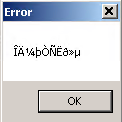Trojan.Win64.VALLEYRAT.THHBGBD
UDS:Trojan.Win32.Shella.hd (KASPERSKY)
Windows


Threat Type: Trojan
Destructiveness: No
Encrypted:
In the wild: Yes
OVERVIEW
This Trojan arrives on a system as a file dropped by other malware or as a file downloaded unknowingly by users when visiting malicious sites.
TECHNICAL DETAILS
Arrival Details
This Trojan arrives on a system as a file dropped by other malware or as a file downloaded unknowingly by users when visiting malicious sites.
Installation
This Trojan adds the following processes:
- Invoke-Command -Command {Add-MpPreference -ExclusionPath {Root drive of the malware path}
It adds the following mutexes to ensure that only one of its copies runs at any one time:
- TEST
Autostart Technique
This Trojan drops the following file(s) in the Windows User Startup folder to enable its automatic execution at every system startup:
- %User Startup%\CompMgmtLauncher.lnk
- %User Startup%\eventvwr.lnk
(Note: %User Startup% is the current user's Startup folder, which is usually C:\Windows\Profiles\{user name}\Start Menu\Programs\Startup on Windows 98 and ME, C:\WINNT\Profiles\{user name}\Start Menu\Programs\Startup on Windows NT, C:\Documents and Settings\{User name}\Start Menu\Programs\Startup on Windows 2003(32-bit), XP and 2000(32-bit), or C:\Users\{user name}\AppData\Roaming\Microsoft\Windows\Start Menu\Programs\Startup on Windows Vista, 7, 8, 8.1, 2008(64-bit), 2012(64-bit), 10(64-bit).)
It adds the following registry entry/entries to enable the automatic execution of a malicious file every time an Office application is started:
HKEY_CURRENT_USER\Console
SelfPath = {Malware File Path}
Other System Modifications
This Trojan modifies the following registry entries:
HKEY_LOCAL_MACHINE\SOFTWARE\WOW6432Node\
kingsoft\antivirus\Windhunter
WindhunterLevel = 4
HKEY_LOCAL_MACHINE\SOFTWARE\WOW6432Node\
kingsoft\antivirus\Windhunter
WindhunterSwitch = 0
HKEY_LOCAL_MACHINE\SOFTWARE\WOW6432Node\
kingsoft\antivirus\KSetting
kxesc = 0
HKEY_LOCAL_MACHINE\SOFTWARE\WOW6432Node\
kingsoft\antivirus\KAVReport
AutoStart = 0
HKEY_LOCAL_MACHINE\SOFTWARE\WOW6432Node\
Tencent\QQPCMgr
autostart = 0
It deletes the following registry keys:
HKEY_CURRENT_USER\Console\IpDate
HKEY_CURRENT_USER\Software\Classes\
mscfile
HKEY_CURRENT_USER\Software\Classes\
ms-settings
HKEY_CURRENT_USER\Software\Classes\
.pwn
Process Termination
This Trojan terminates the following processes if found running in the affected system's memory:
- 360Sd.exe
- 360leakfixer.exe
- safesvr.exe
- MultiTip.exe
- 360Tray.exe
- 360tray.exe
- 360Safe.exe
- 360safe.exe
- ZhuDongFangYu.exe
- kscan.exe
- kwsprotect64.exe
- kxescore.exe
- kxetray.exe
- HipsMain.exe
- HipsTray.exe
- QMDL.exe
- QMPersonalCenter.exe
- QQPCPatch.exe
- QQPCRealTimeSpeedup.exe
- QQPCRTP.exe
- QQPCTray.exe
Other Details
This Trojan connects to the following URL(s) to check for an Internet connection:
- http://www.{BLOCKED}u.com
It does the following:
- After the process termination, it checks again for the following processes to see if they are still running in the system.
- kxetray.exe
- 360sd.exe
- 360Tray.exe
- 360tray.exe
- 360Safe.exe
- 360safe.exe
- QQPCTray.exe
- MsMpEng.exe
- HipsTray.exe
- If any of these processes are still running, it will do the following:
- Injects a shellcode into a running lsass process.
- It terminates the following processes if found running in the affected system:
- 360Sd.exe
- 360tray.exe
- 360Safe.exe
- 360safe.exe
- HipsMain.exe
- HipsTray.exe
- QMDL.exe
- QQPCTray.exe
- QQPCRTP.exe
- If the following processes within its list are still found running in the system, the malware process displays an “ERROR” message box and terminates.

- It checks for the presence of the following files:
- %User Profile%\wwlib.dll
- %User Profile%\WinWord.exe
- It checks the following registry entries related to popular communication applications.
- HKEY_CURRENT_USER\Software\Tencent\Wechat
- HKEY_CURRENT_USER\Software\Dingtalk
- It retrieves the URL of the C2 server stored in this registry entry by the main loader:
- HKEY_CURRENT_USER\Console IpDateInfo
- It will connect to the following URL after successfully retrieving the information.
It adds the following scheduled tasks:
- Name: CompMgmtLauncher
- Trigger: At log on of any user
- Actions: Start a program - %System%\eventvwr.msc
(Note: %System% is the Windows system folder, where it usually is C:\Windows\System32 on all Windows operating system versions.)
SOLUTION
Step 1
Trend Micro Predictive Machine Learning detects and blocks malware at the first sign of its existence, before it executes on your system. When enabled, your Trend Micro product detects this malware under the following machine learning name:
- Troj.Win32.TRX.XXPE50FFF083
Step 2
Before doing any scans, Windows 7, Windows 8, Windows 8.1, and Windows 10 users must disable System Restore to allow full scanning of their computers.
Step 3
Note that not all files, folders, and registry keys and entries are installed on your computer during this malware's/spyware's/grayware's execution. This may be due to incomplete installation or other operating system conditions. If you do not find the same files/folders/registry information, please proceed to the next step.
Step 4
Restart in Safe Mode
Step 5
Delete this registry key
Important: Editing the Windows Registry incorrectly can lead to irreversible system malfunction. Please do this step only if you know how or you can ask assistance from your system administrator. Else, check this Microsoft article first before modifying your computer's registry.
- In HKEY_CURRENT_USER\Console\IpDate
Step 6
Delete this registry value
Important: Editing the Windows Registry incorrectly can lead to irreversible system malfunction. Please do this step only if you know how or you can ask assistance from your system administrator. Else, check this Microsoft article first before modifying your computer's registry.
- In HKEY_CURRENT_USER\Console
- SelfPath = {Malware File Path}
- SelfPath = {Malware File Path}
Step 7
Restore these modified registry values
Important:Editing the Windows Registry incorrectly can lead to irreversible system malfunction. Please do this only if you know how to or you can seek your system administrator's help. You may also check out this Microsoft article first before modifying your computer's registry.
- In HKEY_LOCAL_MACHINE\SOFTWARE\WOW6432Node\kingsoft\antivirus\Windhunter
- WindhunterLevel = 4
- WindhunterLevel = 4
- In HKEY_LOCAL_MACHINE\SOFTWARE\WOW6432Node\kingsoft\antivirus\Windhunter
- WindhunterSwitch = 0
- WindhunterSwitch = 0
- In HKEY_LOCAL_MACHINE\SOFTWARE\WOW6432Node\kingsoft\antivirus\KSetting
- kxesc = 0
- kxesc = 0
- In HKEY_LOCAL_MACHINE\SOFTWARE\WOW6432Node\kingsoft\antivirus\KAVReport
- AutoStart = 0
- AutoStart = 0
- In HKEY_LOCAL_MACHINE\SOFTWARE\WOW6432Node\Tencent\QQPCMgr
- autostart = 0
- autostart = 0
Step 8
Search and delete these files
- %User Startup%\CompMgmtLauncher.lnk
- %User Startup%\eventvwr.lnk
Step 9
Restart in normal mode and scan your computer with your Trend Micro product for files detected as Trojan.Win64.VALLEYRAT.THHBGBD. If the detected files have already been cleaned, deleted, or quarantined by your Trend Micro product, no further step is required. You may opt to simply delete the quarantined files. Please check this Knowledge Base page for more information.
Did this description help? Tell us how we did.

